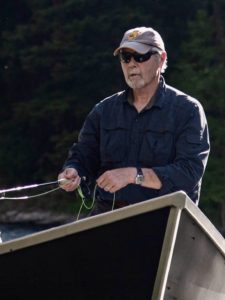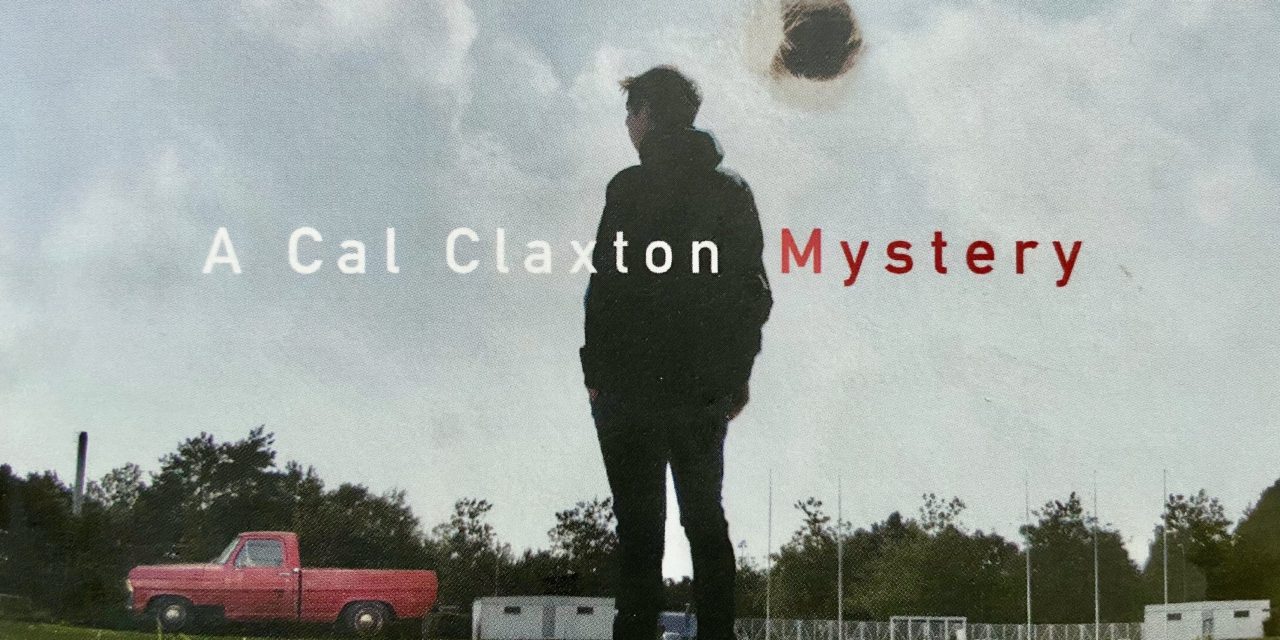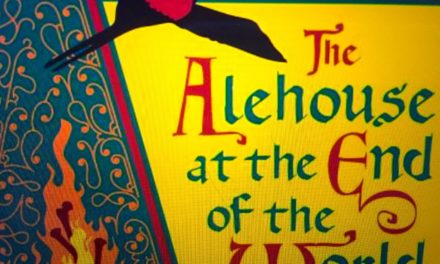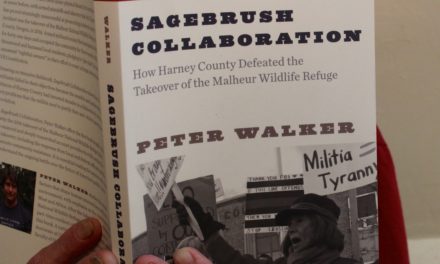(Above: A detail from the book cover of No Witness, the latest in the Cal Claxton mystery series by Oregon writer Warren Easley.)
Title: No Witness
Author: Warren C. Easley
Publisher: Poisoned Pen Press, Scottsdale, Ariz. (a division of Sourcebooks)
Available: Aug. 17, 2021
Synopsis: Solo lawyer Cal Claxton hires a young undocumented “Dreamer” as his legal clerk, and when the young man’s sister is brutally murdered, the two quickly become a team investigating not only who did it but whether she was the intended victim, a task made more difficult because of fears in the migrant community about coming into contact with law enforcement.
By Randi Bjornstad
Like many who grow up knowing that deep-down they are meant to be writers, Warren Easley knew that feeling when he was about 6 years old.
“I was precocious, kind of, and I wrote my first mystery story when I was about that age,” Easley said in a recent telephone interview. “I don’t remember much about it, but I do remember there was an armored car robbery, and the robber used a snub-nosed .38 — I loved that term — and the robbery was foiled.”
But when his 14-year-old brother used a scatalogical term to express his opinion of the little boy’s effort, it put a damper on young Warren’s enthusiasm that lasted pretty much from childhood until his retirement decades later from a career in research chemistry and international business.
(To be fair, although the older brother seemingly ruined the younger’s writer’s zeal in childhood, in a way he rescued him decades later when he read the younger man’s renewed effort at crime writing and enthusiastically encouraged him to pursue it.)
“I had to do quite a bit of writing in high school, of course, and then when I wound up in the business world, I found that being able to write well was a real asset,” Easley said. “Learning how to write with real clarity in that environment also helped me when I went back to writing prose — so it worked for me both ways.”
In the decades in between, he chose to pursue a Ph.D. in chemistry “to make a living,” he said. “I also thought about law a little bit, but no matter what I might have chosen, I think writing was always in the back of my mind.”

Murder mystery writer Warren Easley fishing for rainbow trout on the Grand Ronde River; photo courtesy of the author.
It came back to the forefront in when he met his second wife, Marge, “who is a big mystery fan,” Easley recalled. “There was Tony Hillerman, Sara Peretsky, Michael Connelly. I started reading Walter Mosley and his character Easy Rawlins, who I think is my favorite character in fiction. Then I got into James Lee Burke and by then I was getting close to retirement.”
That meant he had time to think about writing, and to do it.
“I had written a little poetry through the years, which I kept in the closet,” Easley said. “And I did a couple of short stories.”
Well, yes, he did. Easley got interested in “flash fiction,” a project of editor Otto Penzler, who solicited murder mystery stories no longer than 1,000 words that he selected and put into an anthology called Kwik Krimes, including work by as many as 80 authors. Easley had a couple of stories selected, including one called The Promise, in which a sleuth of a girl figures out how to capture her grandfather’s murderer.
“That helped me along,” he said. “Then I submitted a story to a national contest sponsored by Willamette Writers, and I got second place.”
After that came four full-length novels.
“The first was awful, the second pretty good, and the third better. By the fourth one, I knew this was a skill level l could attain,” Easley said.
He had submitted each of the first three to the Poisoned Pen Press in Arizona, “and they kept saying, ‘These are good, keep on writing,’ ” Easley said. “I guess you’d say it was sort of a friendly rejection.”
But when he sent in No. 4, titled Matters of Doubt, “I never heard back from them,” he said. “I mentioned it to my wife, and she said, ‘Send them an email and ask about it.’ So I did, and they said they must have misplaced it, and would I send it again. I did, and in five weeks I had a contract for that book and two future ones.”
Matters of Doubt came out in 2013, followed by Dead Float (2014), Never Look Down (2015), Not Dead Enough (2016), Blood For Wine (2017), Moving Targets (2018), No Way to Die (2019), and this year’s, titled No Witness, to be released on Aug. 17, 2021.
Now Easley’s already 230 pages into No. 9, and expects to have a draft done in a few weeks. The hardest part of a book is the middle, “because that’s when everything has to start coming together so there are no loose ends, and everything is resolved.”
It also was hard to write during the pandemic, he acknowledged. “I felt so distracted, even though I had lots of time to work on No Witness, and I did finish it in 2019,” he said. But during that same time Poisoned Pen Press was purchased by Sourcebooks, which did a review of all the authors on the Poisoned Pen roster and cut some. Easley was one of those retained, but the winnowing process pushed some publication dates into 2021.
Most of his books run about 95,000 words. “They always seem to fall between 92,000 and 100,000 no matter what,” Easley said. “I seem to have developed a sense of pace that seems to work for me and the story construction so that I know when it needs some action and when I need to bring the characters along.”
He has no hard-and-fast rules, except that “I need to kill someone off in about the first 50 pages to make the story work.”
His main character, Calvin Claxton III, “came to my mind almost fully formed,” Easley said. “I didn’t want an incredibly flawed character, more of an ‘everyman’ who like everyone has his problems but who is tenacious and and gets back up. I also wanted a hero with a name that sounds a little clumsy.”
In fact, he borrowed Claxton from his mother’s maiden name. (Even though his own middle initial is “C,” in his case it stands not for Claxton but Cliett, his paternal great-grandmother’s maiden name as well as his father’s first name.
Very rarely, he lets something from his real life enter into his prose. His Cal Claxton character is a dog lover who has a tri-color Aussie as his constant companion.
“I had a tri-color Aussie named Buddy for 14 years, and his character is basically the one in the books,” he said. “But I lost him three years ago, and now I have another, Archie, who’s 6 months old.”
When Easley starts a new novel, he just sits down and starts it.
“I don’t have an outline — I’m what they call in the trade a ‘pantser,’ which means that when I write, I fly by the seat of my pants,” he said. “I start with an idea for an ‘inciting incident,’ usually the first murder, and a cast of characters that I can sort of visualize through the haze. As I get to know them — I mainly discern them through dialogue — I become more and more sure of them, and the story just flows.”
Occasionally a character gives him a bit of trouble, “and that’s when I need to visualize a person, so I sometimes may search online at pictures of people to get an idea of who that character might be.”
He usually has a theme in mind for each book, though. In No Witness, the plot revolves around immigration and farm labor issues in Oregon’s wine country, and of course, murder.
“Then I just start writing and see where everything goes,” Easley said. “I have a sign written on my whiteboard: TRUST THE PROCESS.”
He acknowledges that writing a long series of books holds its own perils, particularly repetition.
“Now that I have written this many, I have to be careful about both plot and dialogue, not to repeat,” he said. “Sometimes I remember an incident or a sentence, and it seems as if I’ve maybe used it before, but now I can search previous (manuscripts) and find things like that. I don’t know how people managed that before computers.”
Once Easley finishes a book and it’s off to the publisher, if he takes a break at all before beginning the next one, it’s usually short.
“Once a book is done, I’m done with it,” he said. “I don’t go back and reread it or anything like that. I just don’t. I’m done.”

Besides writing murder mysteries, author Warren Easley enjoys downhill skiing, fly fishing, and tutoring students studying for the GED; photo courtesy of the author.












